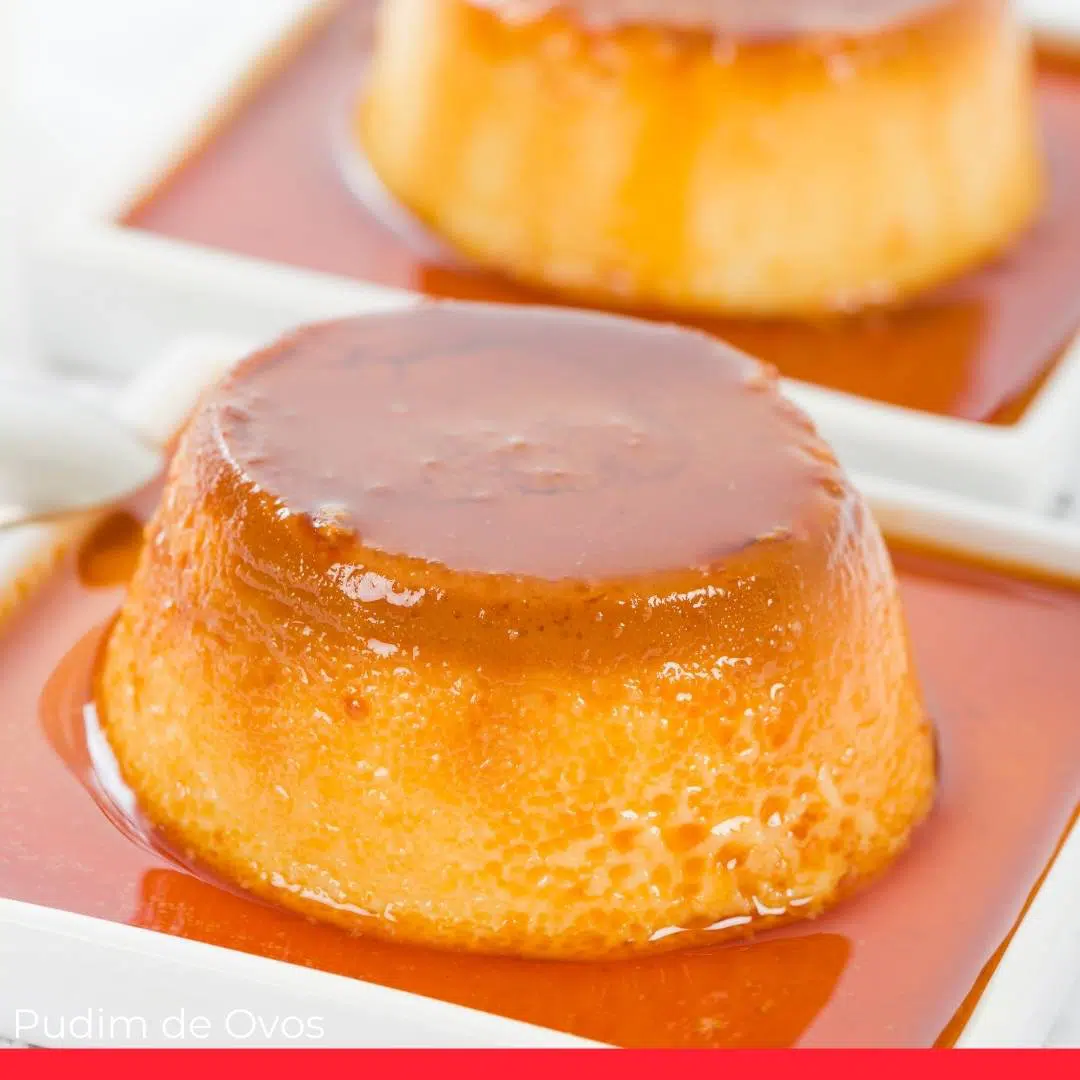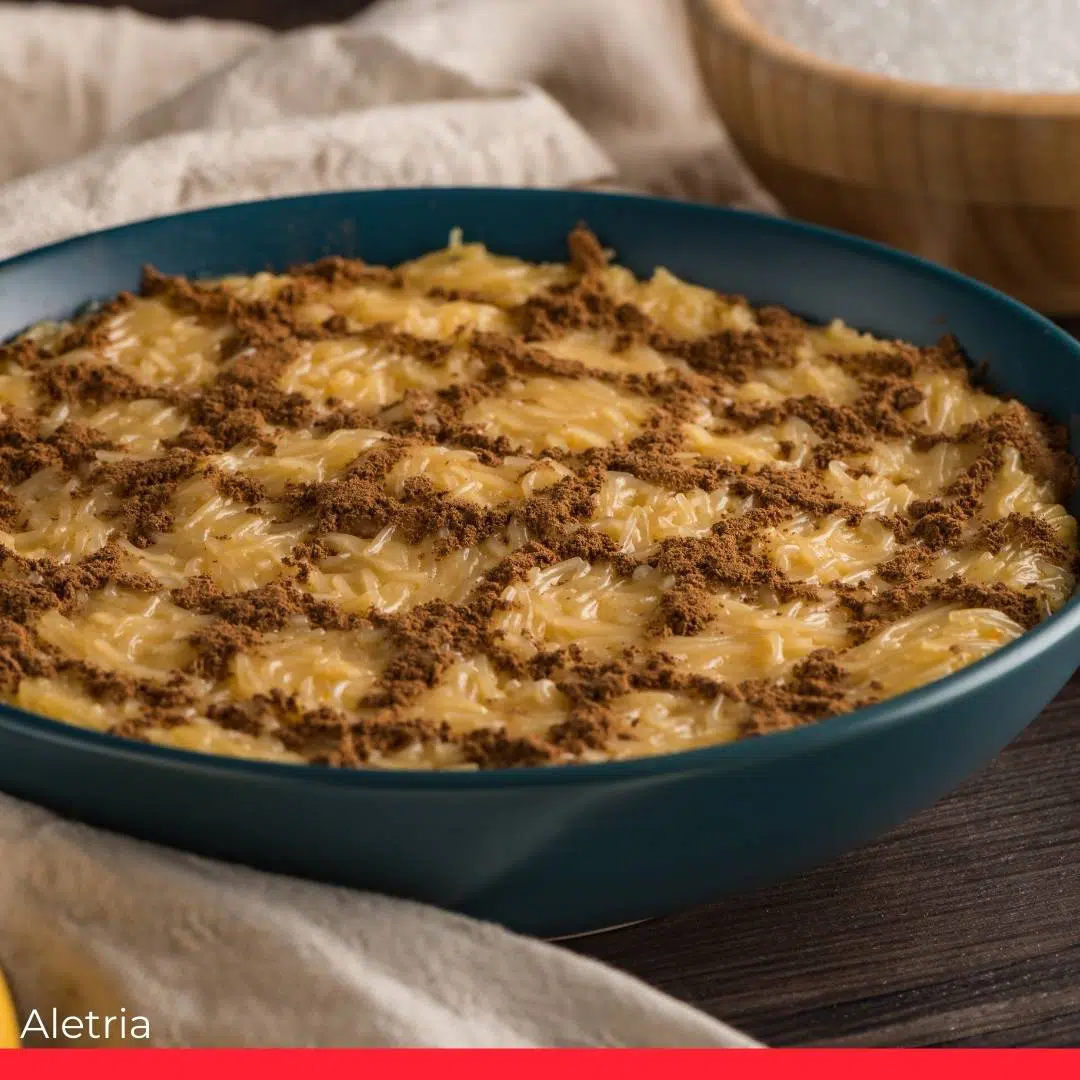Top 20 Most Popular Desserts in Portugal

If you travel to Portugal, you must try a Pastel de Nata. No matter how clichéd it may be, it is one of those experiences you cannot forget. Pastel de Nata is undoubtedly the most famous sweet in Portugal, a true symbol of local cuisine. But, to understand Portuguese confectionery, it is necessary to go beyond the classic custard tart.
With that in mind, I have gathered here my favorite typical Portuguese sweets that are great to try at restaurants or to order at the nearest bakery. Make a note of the ones you are most interested in, so you don’t miss out on your next trip to Portugal.
1. Pastel de Nata

Created by monks expelled from the Jerónimos Monastery, in Belém, in the 19th century, this delicacy quickly entered the hearts of the Portuguese people. And then it conquered the world. To this day, tourists from all over the world line up at the Pastéis de Nata Factory to try this marvel of Portuguese cuisine.
It is an egg custard tart and, usually, it is dusted with cinnamon. Contrary to what many people think, it is not a dessert. It can be eaten at any time of the day, and it goes especially well for breakfast preferably with a cup of coffee.
2. Pudim de Ovos

Pudim de Ovos is a classic custard pudding dessert which will leave you wanting more and more. It is a quick and simple recipe to follow and is a favorite of many Portuguese families, making special appearances at Christmas and Easter. You will only need four ingredients: milk, sugar, eggs, and caramel.
So, when the craving for sweets hits, Pudim de Ovos is certainly a good choice!
3. Rabanadas

One of the indispensable Christmas desserts is Rabanada, a historic sweet full of tradition. The recipe is based on thick slices of bread left to age for a day, dipped in milk for a few seconds, and then covered in beaten eggs and fried in oil.
Tradition says you dust Rabanadas with sugar and cinnamon, but there are also other versions, such as those with fruit and cream. There are alternatives to the basic ingredients, such as using wine instead of milk or using flour instead of egg.
4. Aletria

Aletria is yet another dessert often served at Christmas and is found in almost all regions of the country. This delicacy is very similar to rice pudding, though is prepared by cooking pasta in milk and sugar, enriched with some lemon peel. Vermicelli is used, which is thinner than spaghetti and similar to the angel hair pasta often used in savory recipes. Before being served, Aletria is decorated with cinnamon, usually in a crisscross pattern.
Quick and very practical, it is perfect when you are in a hurry or don’t want to spend a lot of time in the kitchen.
5. Peras Bêbadas

Peras Bêbadas literally means drunk pears. No surprise, since the pears are cooked in a syrup made with sugar and spices, such as cinnamon and cloves, and port wine. The combination is perfect, and the result is a visually appetizing dessert.
These Peras Bêbadas can be cooked whole or cut in halves or pieces. You can serve the pears with a scoop of vanilla ice cream, a spoonful of mascarpone cheese, or a slice of chocolate cake.
6. Molotof

Molotof is a very eye-catching caramel-filled dessert found in Portuguese restaurants all over the country. Though sometimes referred to as Molotof pudding, it is, in fact, a soufflé. Made from a mixture of egg whites and sugar, cooked in a bain-marie, Molotof is very difficult to perfect as, like most soufflés, it can be temperamental.
Interestingly, the original name is Malakoff pudding, and it is associated with the Crimean War that took place in 1854 and 1855. As always in times of war, food is scarce, and this pudding was born because it uses few ingredients that are easy to source.
7. Marmelada

Marmelada is a purée originally made from quince but later made with other fruits, cooked with sugar in equal parts in order to be easily preserved. It is a well-known Portuguese regional sweet, the most famous being the one from Odivelas (near Lisbon) made by nuns of a former monastery.
It can be white or red, depending on the cooking time and the fruit used. The longer it boils, the darker Marmelada becomes.
8. Leite Creme

Leite Creme is a reference dessert in traditional Portuguese cuisine. Easy to make, it takes simple and inexpensive ingredients. It is a lot like the famous French crème brûlée. It consists of a mixture of milk, egg yolks, sugar, and flour and is usually flavored with lemon or orange peel or with cinnamon. It is then finished by sprinkling sugar on top and burning it with a blowtorch to form a caramel crust.
Leite Creme is a smooth and velvety dessert with a lot of flavor. One of life’s simplest pleasures is certainly cracking the caramelized top with a teaspoon.
9. Serradura

One of the most typical desserts in Portuguese sweets, Serradura, is very popular with children, but adults cannot resist it either! It is a perfect dessert for less experienced hands, as it only requires three ingredients: crushed biscuits – in Portugal, the well-known Bolacha Maria is used – and a mixture of cream and condensed milk.
In individual bowls or a single large bowl, make layers starting with the crushed biscuits and cream. Repeat until you run out of ingredients, ending with a layer of biscuit. In an instant, this delicacy is prepared!
10. Natas do Céu

Natas do Céu is another delicious dessert made with very few ingredients. The name, meaning cream from heaven, is the perfect description of this thick, layered dessert from Portugal.
The dessert includes layers of crushed biscuit and fluffy whipped cream, ending with egg candy (whisked egg yolk with a drizzle of sugar syrup). It is the dessert of choice in many Portuguese homes. It is almost always served cold, so it does not taste too sweet and is usually served in a glass.
11. Baba de Camelo

Baba de Camelo means camel slob, which is, without a shadow of a doubt, the most unexpected, unusual, and strange name for a dessert. The origin of Baba de Camelo is not known for sure, but one story says that a lady who had unexpected guests invented this mousse with the few ingredients she had in the kitchen. The name was chosen simply to get the attention of the guests.
Baba de Camelo is made simply by adding condensed milk and eggs. Its consistency is very creamy, creamier than a mousse, and it can also be served with chopped nuts (almonds, walnuts, Brazil nuts, etc.) on top.
12. Toucinho do Céu

Toucinho do Céu is a typical Portuguese sweet, originally made in a convent. The name reflects the original recipe which was made with lard rather than butter (Touchinho do Céu means bacon from heaven). It consists of a kind of cake made with sugar and ground almonds, sometimes candied gila, and, finally, a large portion of egg yolks.
Toucinho do Céu is made all over the country, though it differs from region to region, with the most famous Toucinho do Céu being those from Guimarães, Murça, and Trás-os-Montes.
13. Farófias

Another classic of Portuguese gastronomy, this is a simple recipe with simple ingredients that end up as a wonderful sweet. Farófias is made with egg whites cooked in milk until they become delicious fluffy clouds. It is the ideal dessert when you have egg whites leftover from another recipe.
14. Bolo de Bolacha

The dessert menu in any Portuguese restaurant, whether tourist or neighborhood, will offer the classic Bolo de Bolacha. A dessert that was usually homemade for birthdays and other celebrations has now come to the attention of international foodies because of the tourist boom the country has enjoyed. Internationally, it is known as Portuguese Biscuit Cake or Portuguese Maria Cookie Cake.
This cake, made with Maria biscuits, butter, and coffee, is definitely one not to miss.
15. Salame de Chocolate

Salame de Chocolate is a sweet often made in Portugal for birthday parties and is usually sold either in bakeries or supermarkets. However, its roots are Italian. Portugal not only adopted this dessert but also adapted it, adding port wine and even dried fruit to the traditional ingredients of chocolate, biscuits, butter, and eggs.
16. Broas Castelares

This typical Portuguese Christmas sweet was created in Lisbon, in Rua do Ouro, by the Castelar brothers, owners of Confeitaria Francesa. These dense and filling Portuguese cookies are made with flour, sweet potato, sugar, and eggs and then packed with almonds, lemon and orange zest, or candied ginger. They are recognizable by their elliptical shape, cracked top, and browny-orange color.
The perfect mix of cinnamon, sweet potatoes, and ground almonds makes Broas Castelares a Christmas recipe found on every table.
17. Doces Finos do Algarve

These sweets are miniature fruit and vegetables made with colored almond paste. They sometimes have maritime motifs. Making these sweets to perfection requires a lot of skill, and some creations are authentic works of art.
Doces Finos do Algarve are found throughout the Algarve region, where they are common products in every pastry shop.
18. Brisas do Lis

Brisas do Lis is a typical Portuguese sweet from the city of Leiria. It is made with just three ingredients: egg yolks (or whole eggs), sugar, and almonds. This sweet has a very remote origin. It is said they were made in the former convent of Santana, now demolished, where the nuns were dedicated to their manufacture.
Nowadays, some shops are true experts in making this sweet delight, always with their own touch that does not disrespect the original recipe.
19. Travesseiros de Sintra

Portuguese sweets are increasingly famous around the world. These delights attract countless tourists, and many head to Sintra to try its “travesseiros” (Travesseiros de Sintra means “Sintra´s pillows”)
Alongside Pastel de Nata, the famous Travesseiros de Sintra is a sweet you cannot miss. It is made from puff pastry, with egg and almond cream that is shaped, as its name implies, into a pillow. This sweet is one of the ex-libris of Sintra and, across the country and abroad, everyone knows the name Piriquita, the old bakery, founded in 1862, where the pastry was first made.
20. Pão de Deus

Pão de Deus is a sweet bread topped with coconut, egg cream, and sugar. It can be eaten plain but also with butter, ham, or cheese. The quality of this bread varies immensely depending on the pastry or bakery, because every place has its own recipe.
The history of Pão de Deus is related to All Saints’ Day. It was usual – and still is in some regions of the country – to see children go out into the street, door to door, asking for this traditional Portuguese delight.
21. Bolo de Arroz

Bolo de Arroz, literally rice cake, is a classic Portuguese pastry. It is a fluffy mix between a muffin and a cupcake. The name became rice cake because it uses rice flour, but it has nothing to do with crispy rice crackers. Rice flour makes it moist and smooth in the middle, with a buttery taste. On top, there is a crunchy and brownish crust, sprinkled with sugar.
Related: 25 Most Popular Foods in Portugal

